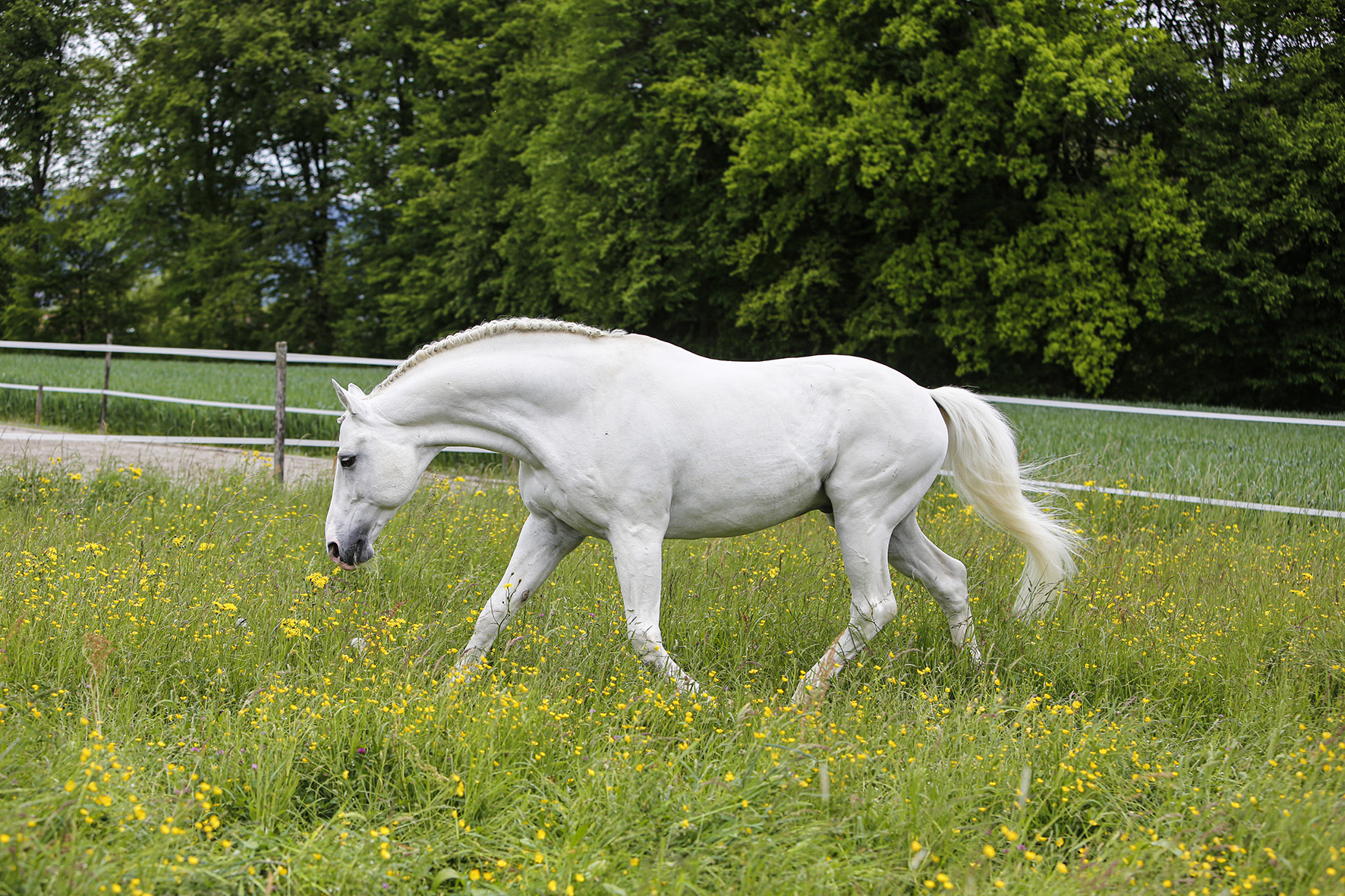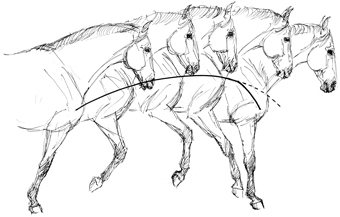Equine biomechanics
Designed by nature to be on the run
The horse has one special physical skill to keep save in the wild from natural predators: speed. The horse is a flight animal – which even domestication and breeding couldn’t change. Certain flight instincts are till today deeply anchored in our riding horses.
When a horse is alert it carries the head high. In this pose the shoulders are pushed down by the trapezius muscle and the horse is fixed on its forehand.
Panic can arise out of this situation and the horse flees. A fleeing horse stays with its backhand long time on the ground to develop a higher thrust. This means the back is pressed low and the backhand is stretched backwards.

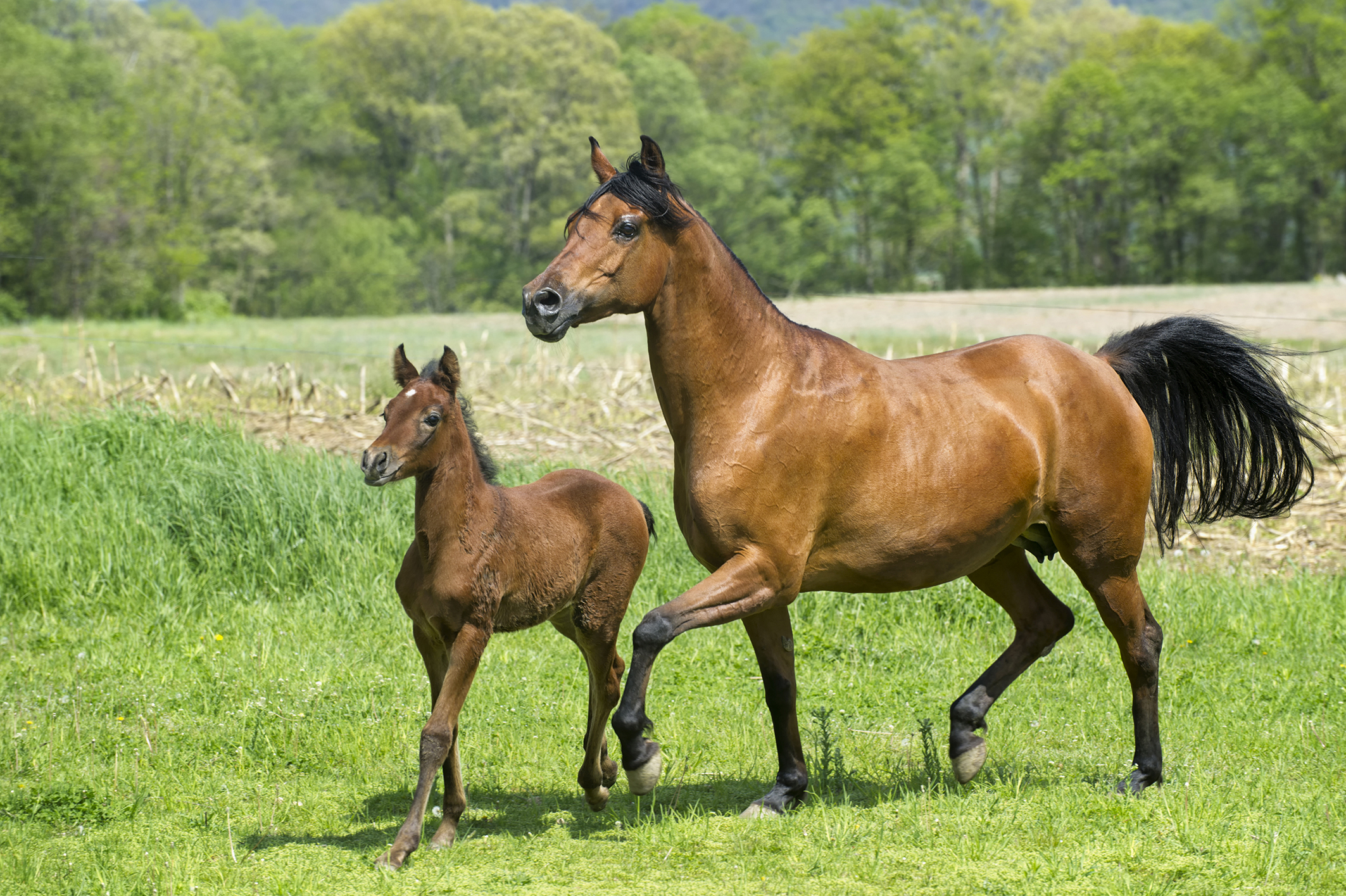
This kind of behavior is totally normal and is only causing problems once the horse is used as a riding horse. A low trunk (leaning on the forehand) in combination with the riders weight ends almost every time in medical treatment of the horse.
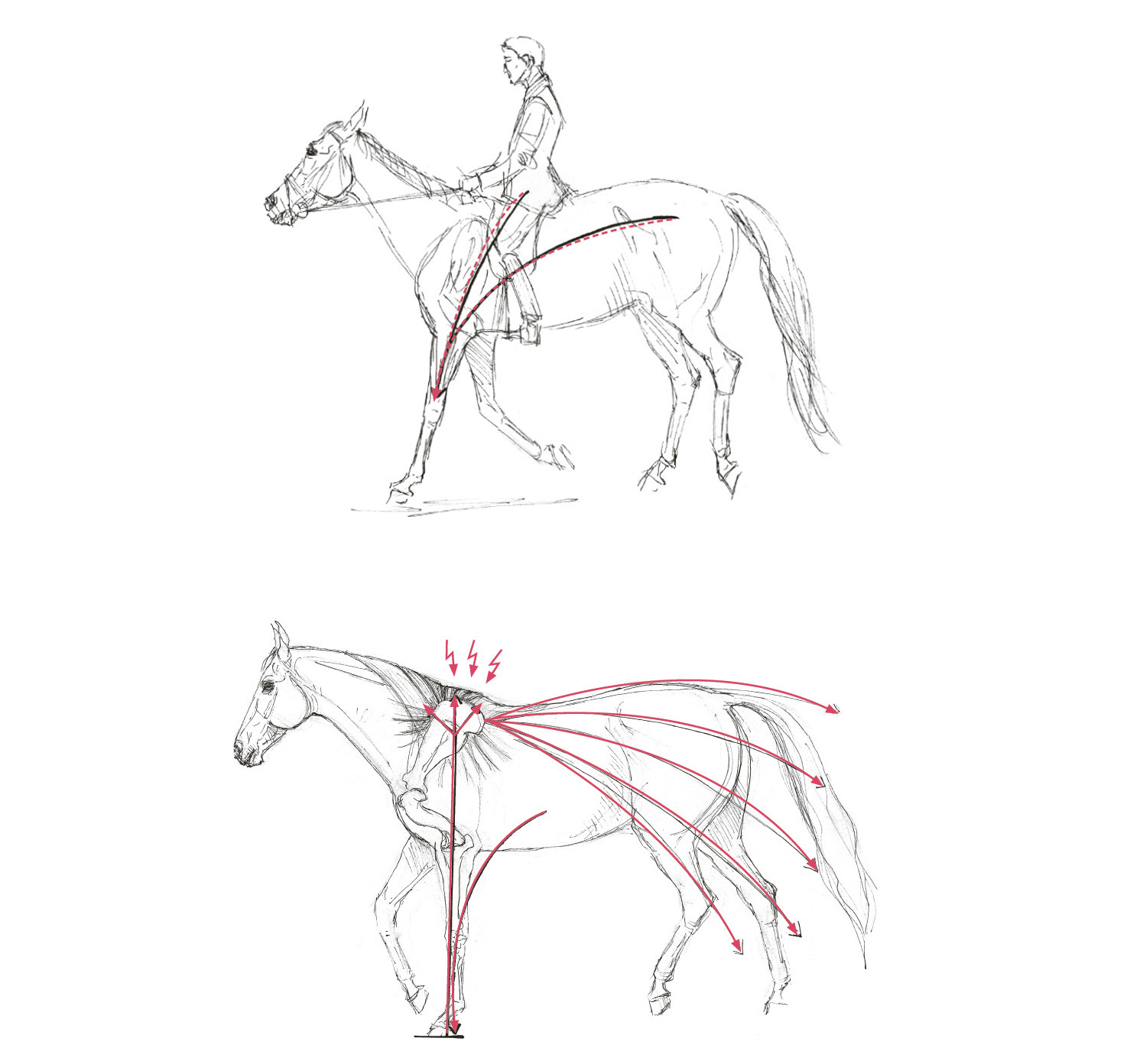
Inherent Crookedness
By nature the horse can only bend its spine on one side horizontally – the dominant side. This dominance corresponds with the human’s: When a human stumbles he will make the saving step with the dominant food to catch itself. Or he will support himself with his dominant hand is he falls. The same pattern of movement can be seen by the horse on the circular arch: A horse will try to master this difficult situation by supporting itself through its dominant forelimb.
For example the forward moving force of the backhand of a right handed person will shift on its shortest way into the strong right forehand (red arrow) because this is the hand of trust. The horse becomes hollow on the left and the natural crookedness reinforces its manifestation because the horse is pushed centrifugally through its right shoulder. The red arrow shows how the spine is moved to the right – a better word in this case would be «bend» with the result that a body which is hollow on the left can’t move its spine to the left (green arrow) – hence in the opposite direction.
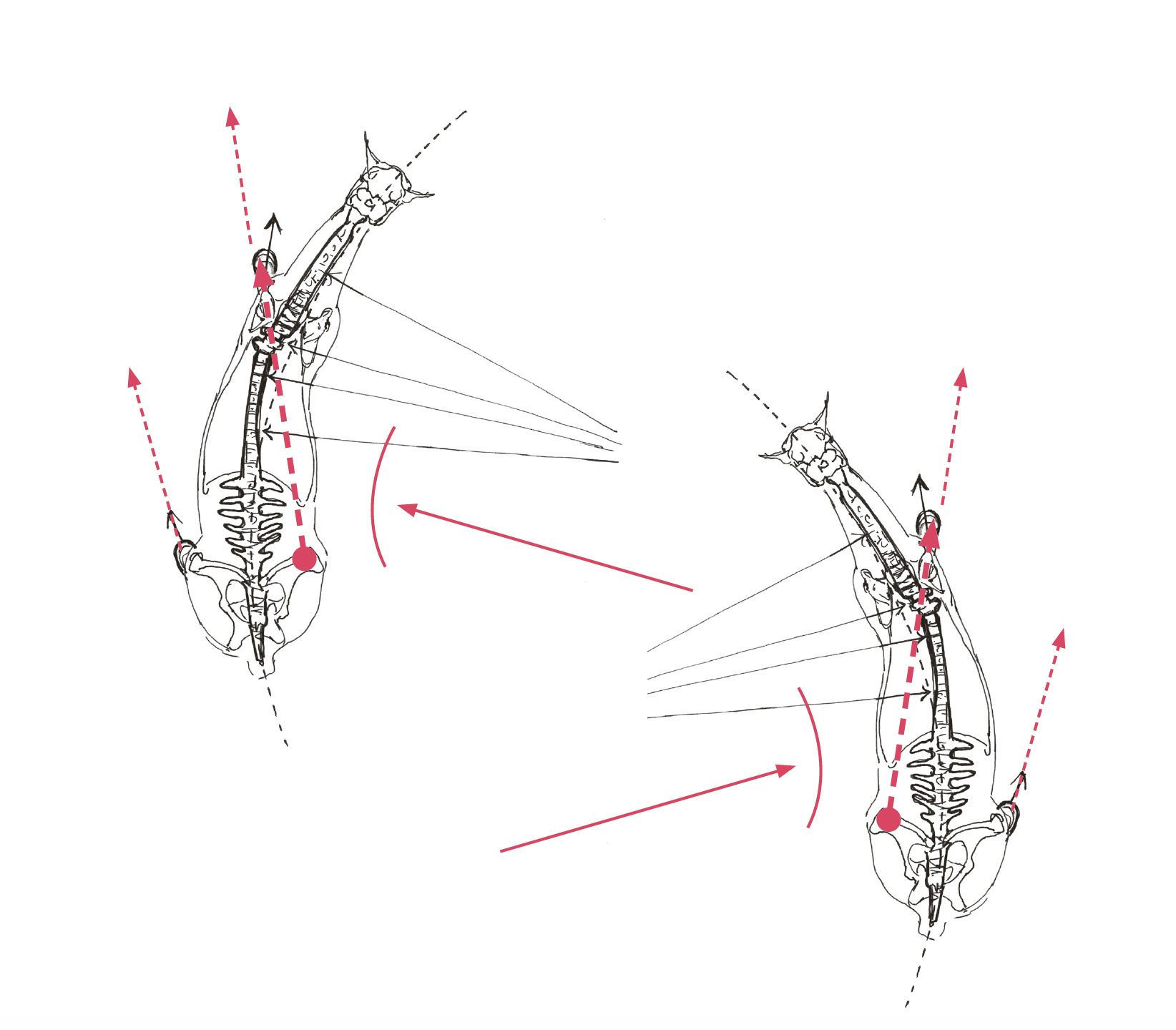

Straightening the horse
The natural crookedness of the horse includes two aspects: The congenital handedness (horizontal) and the anatomical conditioned leaning on the forehand (vertical). Both can be corrected with the help of diagonal shifting – the horse will be shifted in a straight position.
Through training with the cavesson and inside the round paddock the diagonal shift can be carried out. Through the work on the lunge the horse will be given the ability to absorb weight with its back hand and its trunk.
The straightened horse is now swinging upwards with its back. The blood circulation of the muscles is optimal which stimulates metabolism. With the help of a better body feeling the horse gains self-confidence and the stress on the joints is minimized to a minimum. Now the horse is ready to carry its rider’s weight.
This horse can find itself in the training scale when tact, swing and suppleness got combined in newly achieved biomechanics. All of this is based on the now obvious bending of the haunches which was achieved through the development of the meaningful bend line. And all of this before the saddle is placed on the horse’s back.

